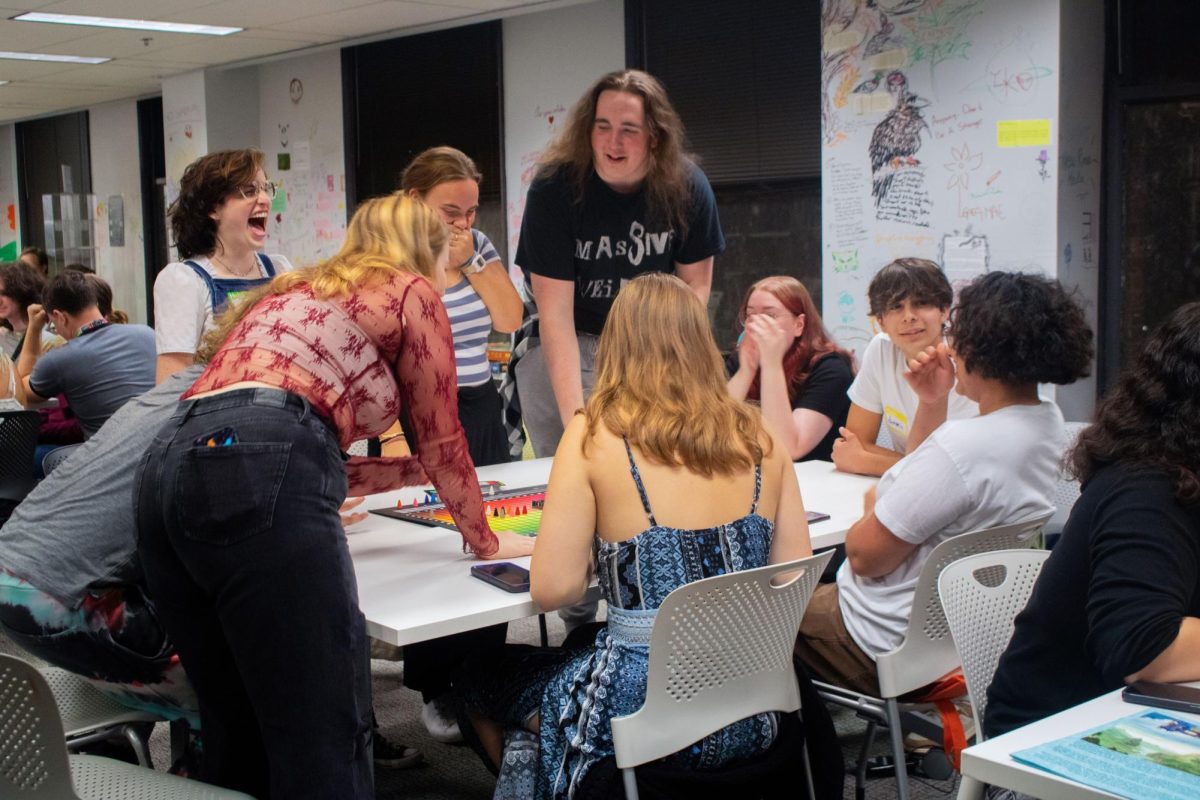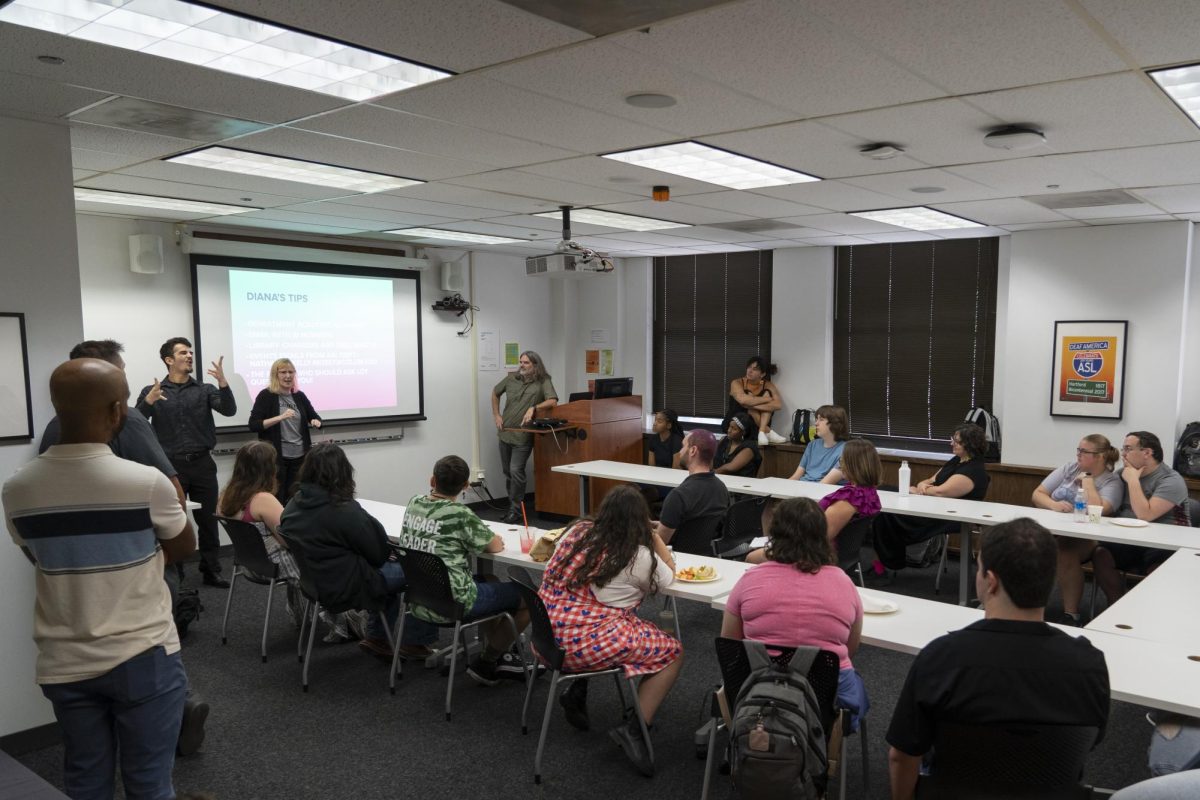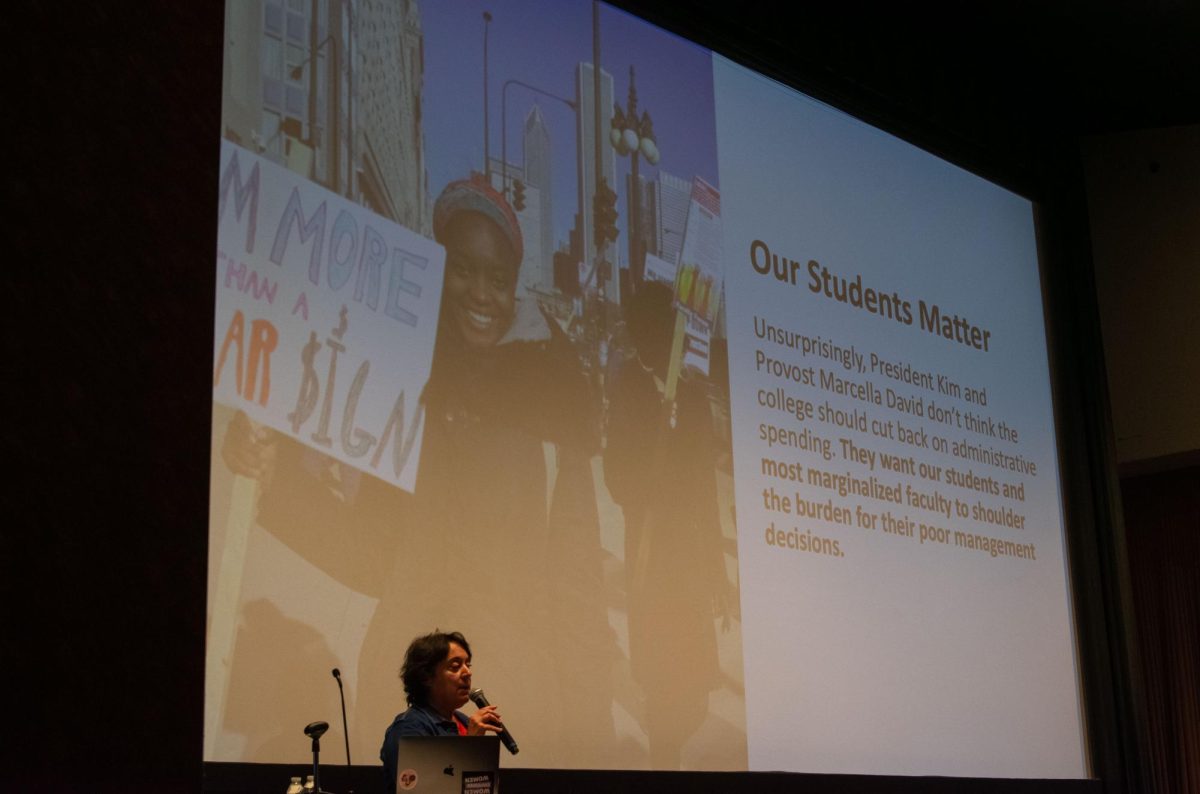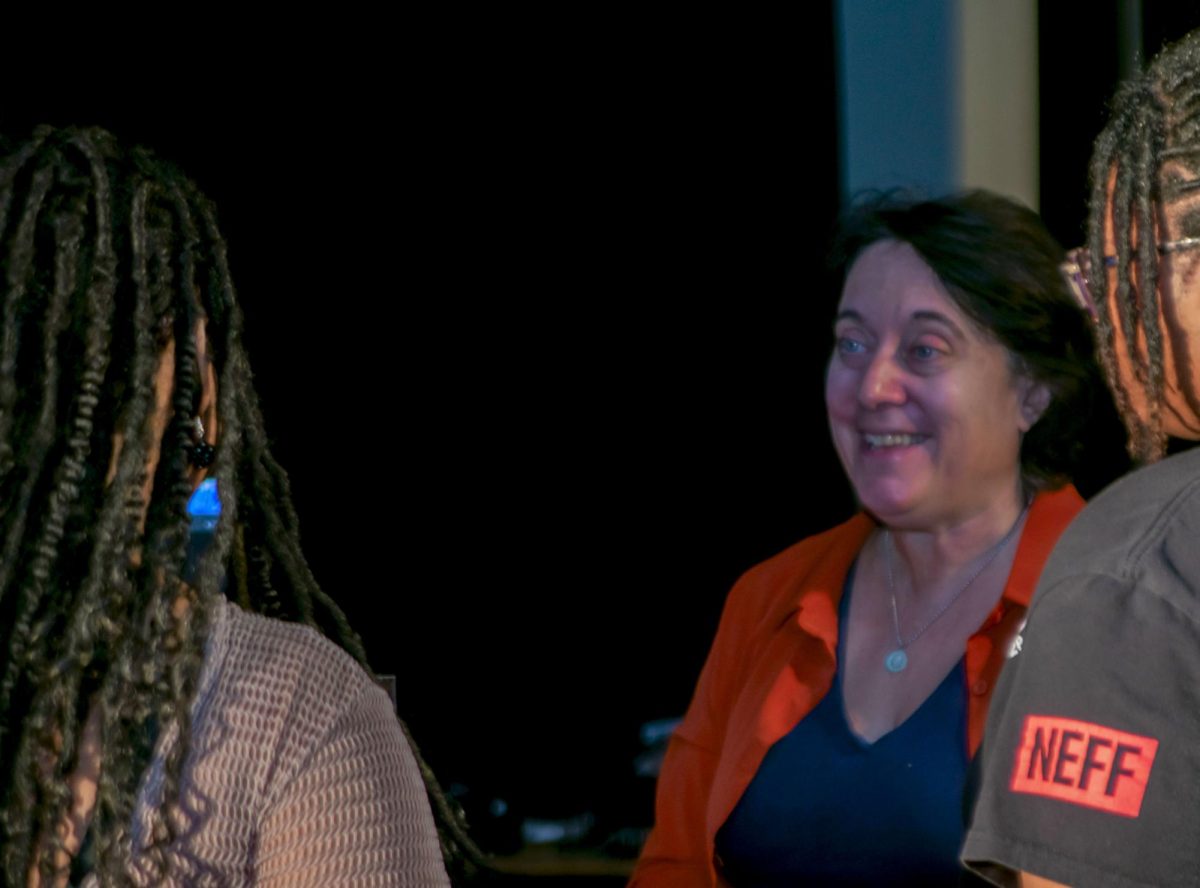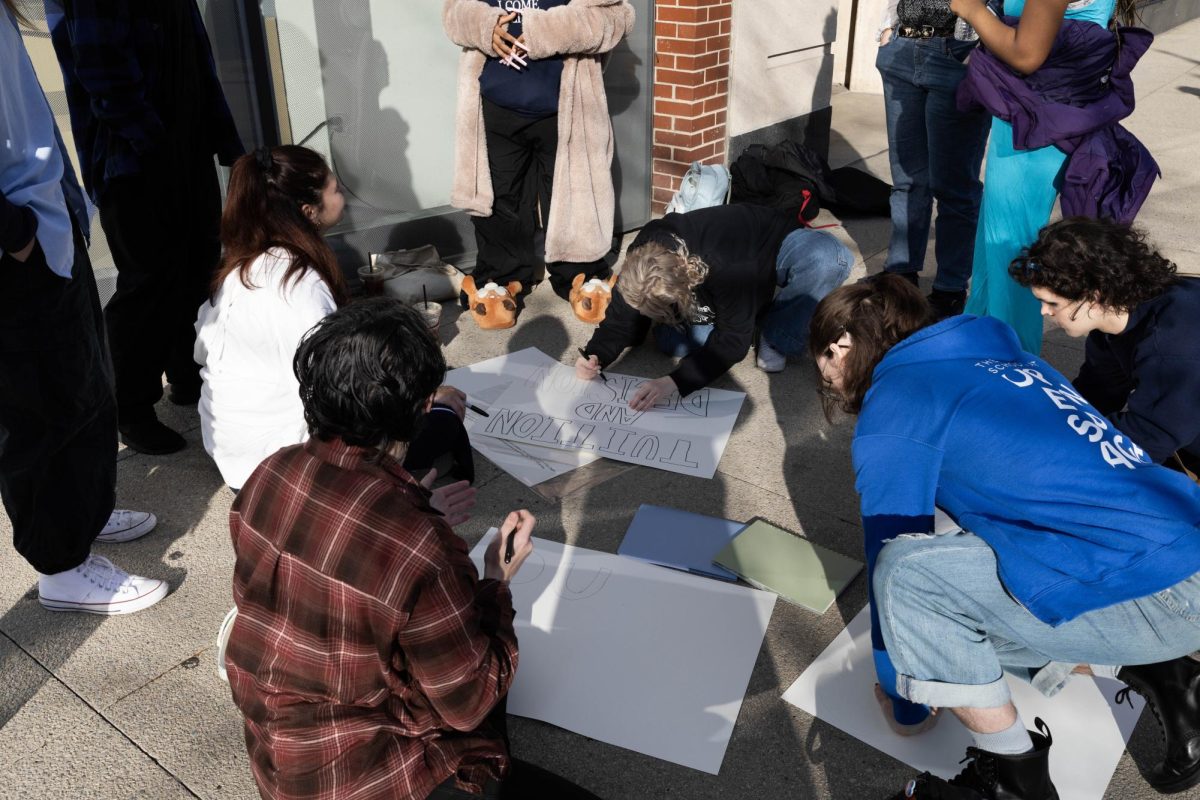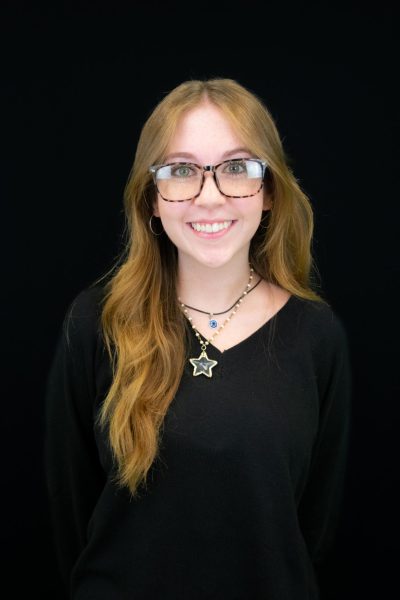
When the course schedule for Spring 2024 goes live on Monday, Oct. 30, students will be able to see the impact of the college’s plan to reduce some sections and increase class size to help cut costs.
It’s unclear if students will notice significant changes across their courses. However, the college disputes part-time faculty union claims that hundreds of courses will be impacted. President and CEO Kwang-Wu Kim said in an email sent to parents on Tuesday, Oct. 24 that the college is “consolidating some sections of some courses – usually survey or introductory courses – into larger ones.”
An independent review by the Chronicle did not find significant increases in class sizes this semester or in Spring 2024, but it did not look at every class in every department.
Increasing class sizes or reducing sections means fewer opportunities for part-time faculty to teach, which is why it has become a central issue in negotiations between the college and Columbia’s part-time faculty union.
The part-time union will decide by Wednesday, Oct. 25 whether or not to authorize a strike.
Columbia Faculty Union President Diana Vallera, a part-time photography instructor, told students at a town hall hosted by the union last week that Columbia plans to eliminate over 340 courses and increase class sizes, some by as much as 388%. She urged students to return the next day to confront Kim and to protest during his Family Weekend address to parents. Hundreds did so.
Senior Vice President and Provost Marcella David, while speaking during the union-led student protest on Oct. 21, said the union leader’s claims were not true.
“Every year, every semester before the semester starts, we remove classes where there is less enrollment than the full enrollment that’s expected for running a class and that happened,” David said.
David said she asked department leaders to work with faculty to make decisions that would be based on three main ideas:
- How do we find efficiencies?
- How do we make sure that we are providing the learning outcomes that we are always wanting to make sure that we are providing for our students?
- How do we make sure that we’re offering the courses that our students need in order to progress for graduation?
David confirmed during Family Weekend that the college has trimmed sections and courses from the spring schedule but did not specify which courses.
The Chronicle independently reviewed about two dozen courses to see what the class size was in Fall 2019, Fall 2021 and Fall 2023, looking at every two years since the semester before the COVID-19 pandemic started. It then compared those class sizes to what is projected for Spring 2024 when the fuller cost-cutting measures are expected to take effect.
The courses reviewed were just a sample and included introductory and capstone classes to get a range. It did not include the Columbia Experience, also known as CCCX courses, which are taught by full-time faculty. Many departments, including the Communication Department, did not respond to requests for Spring 2024 numbers and instead sent the questions to Lambrini Lukidis, associate vice president of Strategic Communications & External Relations.
The information will be available starting Oct. 30 when students can review the Spring 2024 schedule. Registration starts Monday, Nov. 6.
In one example, the Theatre Department’s Introduction to Auditioning has had a course cap of 18 since Fall 2019. There are five sections in Fall 2023 with a cap of 18. The department will offer one 18-seat section in Spring 2024, said Mary Butler, director of academic operations for Theatre.
The Communications Department offered one section of Voiceover in Fall 2019 with a course cap of 16, one section with 17 seats in Fall 2021 and two sections with 18 seats in Fall 2023. Sections in Spring 2024 will be capped at 20 seats, said Deb Doetzer, a part-time faculty member in the Communications Department.
The Math and Science Department offered seven sections of Basic Math Skills in Fall 2019 with 21 seats, nine sections with 19 to 21 seats in Fall 2021 and 10 sections with 20 to 21 seats in Fall 2023. The department will offer four sections with 20 to 21 students in the spring but may “open additional sections of our math courses based on student needs,” said Elizabeth Davis-Berg, professor and chair of the Science and Mathematics Department.
Vallera has said foundation courses and theatre courses were affected the most but told a Chronicle reporter she didn’t “know how many if you’re looking for exact numbers.”
“When the mandate came in, there were about 55 classes that were impacted in the fall, and the rest were going to be spring. So we knew it was going to be the majority of it in spring,” Vallera said.
Matt Cunningham, assistant professor of instruction in the Communication Department, said he hasn’t seen much of a change in course sizes for the radio major. The most he has seen cap sizes rise are two student spots throughout the past couple of years.
“The way I’m understanding it is that the chair is working with program heads to find opportunities to consolidate,” Cunningham said. The Communication “chair is pretty good about understanding what classes can and cannot be taught that way – but we haven’t really talked about it yet.”
Transfer student CJ Elgin, a theatre design and technology major, said their instructors have been talking about potential cuts to courses and how they will not be able to teach as many classes as they want.
“It’s one thing to read it in an email – it’s another thing from a professor that I admire,” Elgin said.
Nicky Jasper, a part-time instructor who teaches Stage Combat in the Theatre Department, said she is worried about classes getting bigger.
Jasper said the stage combat class has always had a course cap of 12 students but over the summer, “there was talk of increasing it as high as 16 or 20.”
That wouldn’t work, she said. “There’s no way we’re fitting 16 students in that room,” Jasper added.
But the Theatre Department is not increasing the class size.
The Stage Combat class will have three sections with 12 seats each in Spring 2024, said Butler.
Frances Maggio, associate professor in the Theatre Department and the coordinator for the costume design program, has been teaching at Columbia for 35 years. This semester, her Costume Design course, capped at 12 students, had an extra student added, and another section with 12 seats was added to meet student demand. That section is taught by a part-time faculty member.
“The college needs to survive, and if it’s gonna survive, they’re gonna figure out ways of paying less money,” said Maggio, who is a former member of the Executive Committee of Faculty Senate. “So if people can come up with a way of making that happen without reducing the amount of classes that part-time faculty teach, that would be great.”
The union has filed an unfair labor practice charge against the college over increasing class sizes and cutting courses or sections of courses. The two sides dispute whether the college has to negotiate with the union when it plans to make these kinds of changes.
In an email from the Office of the President sent to the campus community on Oct. 23, officials acknowledged that dispute and said the college is willing to discuss the availability of impact payments for certain instructors who do not receive any courses for which they are qualified for two concurrent semesters.
“Such a payment provision would apply to instructors with seniority who have taught a minimum number of courses over the past few academic years,” according to the email, which was signed by Chief of Staff Laurent Pernot and Terence Smith, special counsel labor relations.
The college did not agree to pay part-time instructors based on additional students placed in classes. The union had requested $500 for an increase of one student and $1,000 for two students, according to the email.
“The college is, however, willing to make paid training and other resources available to instructors to enhance course delivery for a significantly larger class,” the email stated.


